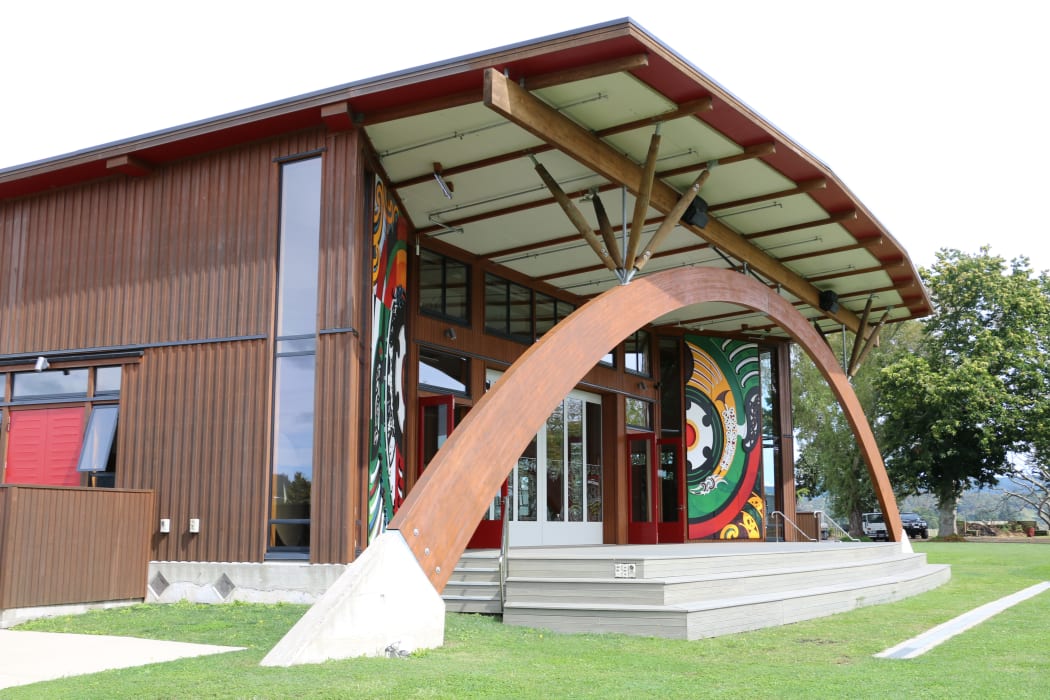As a young architecture student, Deidre Brown was told to "leave Māori architecture on the marae where it belongs".
The University of Auckland professor (Ngāpuhi, Ngāti Kahu) is the first academic and the first Māori woman to receive the NZ Institute of Architects' 2023 Gold Medal.
Deidre Brown is also co-director of the Māori and Pacific Housing Research Centre MĀPIHI, which works towards creating healthy, affordable and sustainable homes for Māori and Pacific whānau.

Professor Deidre Brown (Ngāpuhi, Ngāti Kahu), winner of the 2023 Te Kāhui Whaihanga NZIA Gold Medal. Photo: Adrian Malloch
In May and June, Professor Deidre Brown will deliver a series of free public lectures on contemporary Māori architecture around New Zealand. You can register a place through Eventbrite on the NZIA website.
Professor Brown tells Kathryn Ryan it's both an honour and also "really humbling" to receive an award previously bestowed on people she has worked with and whose work she teaches.
Growing up she was intrigued by the distinctive architecture of Ratana churches, which her great-grandfather Hapeta Renata helped to establish in the 1920s.
With their distinctive twin bell towers, these buildings are very different to whare whakairo - the meeting houses Māori carved in wood.
"I found that really intriguing, particularly when I was an architecture student. I wondered what was the link between the two? What was the history there? But no history had been written.
"That kind of set me on this path of trying to investigate the story of Māori architecture - what underpins it, who practices that and how we can perpetuate it into the future."
Before the arrival of European settlers, early Māori adapted architectural ideas from the Pacific to the local environment, Professor Brown says.
Over time, Māori architecture is characterised by this kind of adaptability, she says, to the environment, to the materials to hand and to the people to hand.
In response to stressors introduced by colonisation, a "self-determined" form of Māori architecture developed, she says, in the form of whare whakairo.
Other approaches, such as the Ratana building style, appropriated technologies and ideas from Pākehā culture and adapted them to suit Māori needs and purposes.
After World War II, the whare whakairo style became dominant, but Professor Brown says in recent decades a "bicultural architecture" has been born.
Te Papa is a great example of this, she says, with its experimentation in how concepts and volumes, rather than decoration, can be used to represent ideas of Māori space.
Now, with Māori architects working as consultants, we can also see aspects of indigenous design incorporated in schools, tertiary campuses, prisons and secure mental health units.
Alongside that, a "self-determined Māori architecture" is taking shape, Professor Brown says, and can be seen in the design of community buildings such as Tūhoe's Te Kura Whare and papakāinga around Aotearoa.
"This is an architecture which is influenced by a number of different building styles, but fundamentally the concepts behind it, the tikanga behind it, the way that these buildings are used, is fundamentally Māori."

Te Kura Whare in Whakatāne Photo: RNZ/Justine Murray

